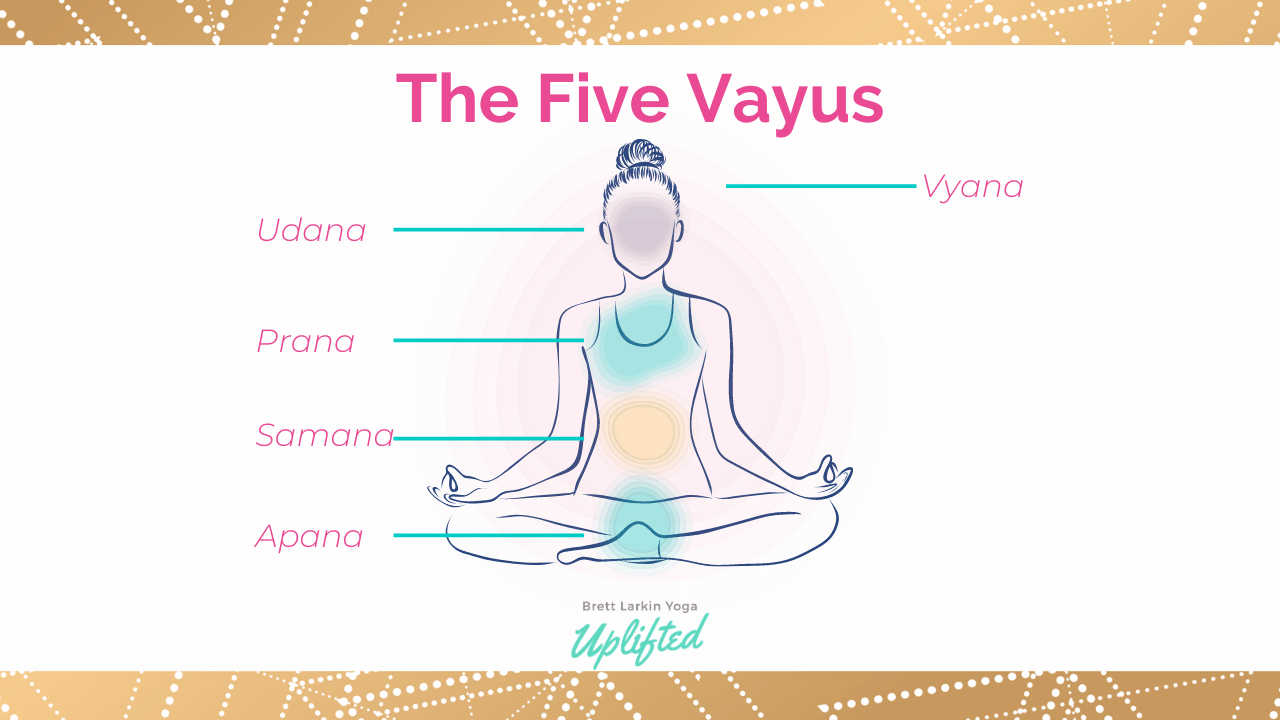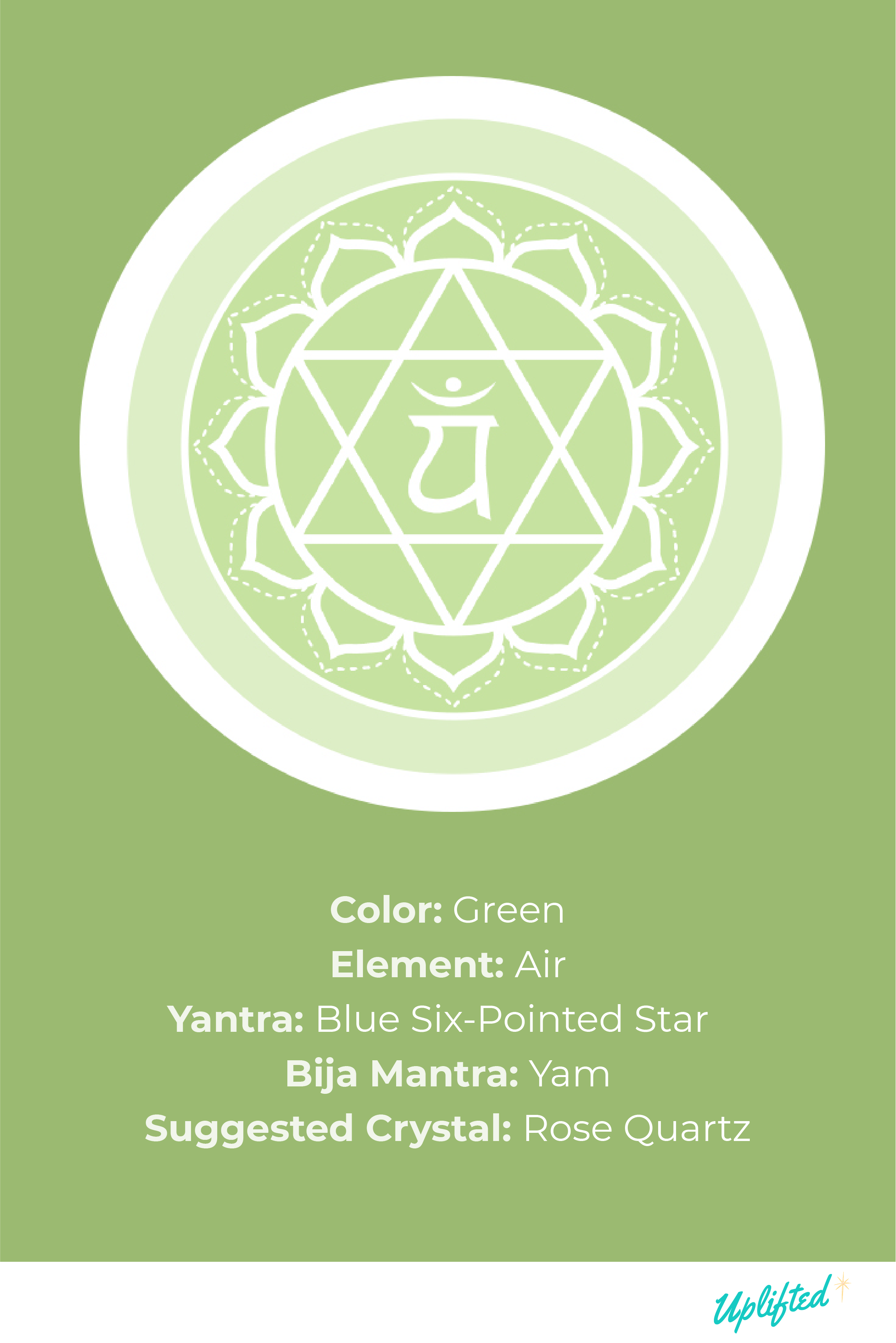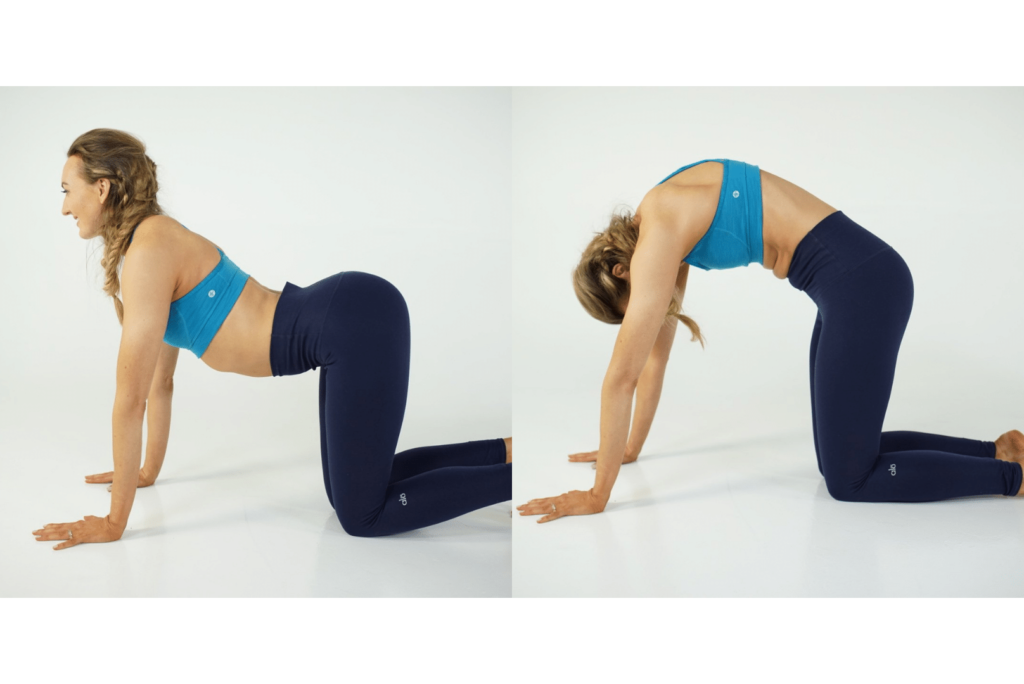
One of my favorite teachers once told me that becoming an accomplished student is about knowing, without a doubt, what you don’t know.
This is a hot tip (you’re welcome!) for studying “next level” yoga philosophy. And you’re in luck! That’s just what’s on the agenda today as we take a closer look at prana vayu, the first of the five vayus. This topic confuses many yogis who are familiar with prana energy, since these are actually separate concepts despite their shared root word. So take a breath and let’s learn something new 💡
In this article, we’ll explore:
- The meaning of prana vayu
- The physical and energetic regions in the body where it’s active
- The characteristic movement pattern of prana vayu,
- Why it’s important to understand prana vayu in yoga, and
- How to identify and remedy common imbalances with yoga, meditation, and pranayama.
Prana Vayu: Your Primary Source of Energy
Prana vayu is perhaps the most essential of the five vayus, or winds, collectively known as the five pancha pranas in yoga: prana vayu, vyana vayu, apana vayu, samana vayu, and udana vayu.

Prana vayu functions as the energetic gateway of life force into the subtle body. As you might have read in my article about prana energy, yoga tradition explains how the five vayus govern activity within the physical body and subtle body. When functioning harmoniously, the five prana vayus support a steady flow of vital life force through your being.
You might be thinking: prana vayu…prana energy… energetic winds… what?
Don’t worry, it all makes sense – I promise!!
The five vayus describe the systemic pattern of energetic flow throughout the entire body that dedicated yogis work to regulate by activating the bandhas and balancing the chakras. Remember that the movement of prana enables us to release energy blockages, invigorate under-nourished chakras, channel vitality into sushumna nadi, and ultimately expand our awareness to higher levels of consciousness.
The regulation of prana is an essential concept in hatha yoga as laid out in the Hatha Yoga Pradipika. However, we often totally overlook it in Western yoga practices that focus purely on asana!
Meaning of Prana Vayu
Let’s rewind.
In Sanskrit, vāyu is a synonym of vāta, one of the three basic typologies in Ayruveda (India’s ancient tradition of medicine and the sister science of yoga), commonly translated into English as “air” or “wind” (source: Wisdom Library).
Prana, as we know, can be translated as life force, energy, and breath. So, prana vayu means “the wind of life” or “the breath of vitality”. It is associated with qualities of the air element and functions of intake: the inhale, respiration, inspiration, perception, propulsion, and momentum.
Prana vayu is the sum of energy generated by the air you breathe, the food you eat, the liquids you drink, and the impressions left by a lifetime of sensory and psychological experiences.
Prana vayu is present in the inward flow of breath, including sighing, coughing, and retention. In contrast to the diffuse nature of vyana vayu throughout the whole body, prana vayu is concentrated in the regions of the body linked to the inhale.
Prana Vayu Location in the Body
Prana vayu is associated with both the physical and energetic regions in the body. It is physically associated with the mouth, nostrils, throat, chest, lungs, diaphragm and navel.
Prana vayu energy pervades the heart center, anahata chakra, and feeds the other vayus as the balancing air of samana vayu draws prana from the heart and toward the navel.
Remember that the heart chakra is also associated with the air element? …You’re catching on 😉
When prana vayu is mentioned in yoga class, its relationship to the four other vayus in the body is often glossed over. Because, hey – you can only fit so much info into a 60 minute yoga sesh, right teachers?
Blockages in the heart chakra may manifest in the body as restrictive sensations in the lungs, shoulders, and heart region that limit your ability to breathe deeply, and thus activate the healing power of prana vayu.

The intake of breath governed by prana vayu is necessary to loosen “knots” of energy that build up in the subtle body – what goes up, must come down, and yep – what goes in, must come out!
If breath is restricted from entering the body for any reason, blockages remain lodged in the subtle body. In this way, the five winds influence the wellbeing of the body as a whole system in sync with the flow of prana through the body and the universe.
Movement Pattern of Prana Vayu
Prana vayu flows inward and upward in the body, feeding into apana vayu, vyana vayu, udana vayu, and samana vayu. It’s occasionally referred to as the “forward moving air,” since it functions as a pressure valve that energizes all of the other five movements and is linked to forward momentum.
Apana Vayu, seated in the lower abdominal region, works as the opposing force to prana Vayu. While prana Vayu governs intake through inhalation, Apana Vayu controls release through exhalation. The downward-moving Apana Vayu energy nourishes bodily functions associated with release in balance with the intake of energy of prana Vayu.
In this way, the movements of Apana Vayu and prana vayu give a good general idea of the overall health of the subtle body and harmony of the vayus, from the throat to the chest region and lower abdomen.
The inward movement of prana Vayu is also linked to the upward movement of udana vayu, enabling faculties of reason, self expression, and spirituality.
Why Study Prana Vayu
“Verily by air, as by a thread, this world, the other world and all beings are held together.”
– Brhadaranyaka Upanishad 3.7.2
Through prana, breath, we are united. This isn’t just a nice idea – it’s also the key to expanding your awareness of the energy body. Once you get the basics of prana down, I definitely advise studying all of the vayus – starting with prana vayu, of course! – and applying your learnings in daily practice. Why?
The vayus offers a framework for understanding how your subtle energies and senses are interconnected. Studying them helps many yogis – especially those who learn by seeing and doing – align practice with theory.
If the chakra system seems a bit abstract or “out-there” to you, studying the vayus is a great way to begin understanding the subtle body.
According to the yoga tradition, our ultimate goal with energy work is to channel vital life force through sushumna nadi to awaken higher forms of awareness that transcend the senses.
Common Signs of Imbalance in Prana Vayu
Imbalance in prana vayu may be reflected energetically or emotionally in the heart chakra or physically in the associated organs. Similarly to chakra blockages, imbalance in one vayu affects all of the other vayus since energy moves through them in a circular flow.
This means that an imbalance in prana vayu expressed in the breath may also manifest in udana vayu as chronic headaches or samana vayu as indigestion, for example.
Here are commons signs of imbalance of prana vayu:
- Anxiety, excessive fear
- Low energy
- Poor immune function
- Shortness of breath
- Poor posture
- Poor circulation throughout the body
- Compromised senses
How To Boost Energy Absorption in Your Yoga Practice
Do you ever feel like you can’t get enough air, no matter how deeply you breathe? If you’ve ever had a panic attack or done some serious hiking at high altitudes in your life, you know what I mean.
Pranayama practice has been scientifically proven to increase your lung capacity, which maximizes the amount of oxygen absorbed into the bloodstream.
Greater lung capacity = greater lung tissue surface area = more blood vessels exposed to oxygen = more oxygen carried into the bloodstream
Did you know that this is why Olympic athletes train at high altitudes? 🤓
There are a number of yogic practices that increase the deep inner absorption of vital energy into your physical and subtle bodies. Tuning in to your prana vayus and their different functions is a great place to start.
Assess Your Current Breathing Practices
Back to prana vayu; ask yourself:
When you inhale, do you use your full lung capacity?
When you exhale, do you release completely?
If your answer to either of these questions is “no”, ask yourself if this is a habitual pattern. Do you always have difficulty taking a full breath, or only in certain situations? When do you find it most difficult to release your exhale completely?
In open level yoga classes, you might notice that teachers often begin by activating apana vayu through guiding a deep exhale. This “downward and out” moving breath has a grounding effect that helps students arrive on their mat by creating space for a deeper, more expansive inhale.
When training the lungs, it’s important to understand the inhale and the exhale as two parts of a whole. Even if your ultimate goal is to increase the activity of prana vayu, the releasing functions of udana vayu may need attention before you begin to work with intake. We can only hold so much!
If you’re unsure of where to start, I recommend a simple breath meditation. Follow along with my 20-minute Kundalini breathing meditation, using vayu mudra to bring awareness to the balance of the air element in your breath.
Once you’ve arrived at a place of relaxed awareness of how your breath is moving in your body, take a moment to consider what your body needs. You can choose between the short yoga sequence and a pranayama practice below, or do them both!
Yoga Asana for Easy Breathing
Yoga postures are effective for improving more than just flexibility. In hatha yoga, asana practice was originally intended improve a yogi’s ability to sit for long hours in meditation in combinations with pranayama to calm or activate the energy, depending on what is needed for balance. Hello prana vayu! Heart-opening poses, twists, and dynamic poses that increase blood circulation and heart-rate are particularly effective in awakening the vital force of prana vayu (dynamic poses are also recommended for improving vyana vayu, but that’s another article).
- Cat / Cow
- Child’s Pose. As a variation to stretch the side body, walk the hands 45° to the right and hold, lifting the pelvic floor and sitting the hips firmly back toward the heels as you breathe deeply into the left side of the body. Repeat on the other side.
- Revolved Head-to-Knee Pose
- Chaturanga. To modify, keep your knees on the mat. Hug the navel up and in and tuck the tailbone as you lower down.
- Cobra Pose

Viloma Pranayama
A balanced yoga practice wouldn’t be complete without breath work! This breath practice is great for beginners. Viloma pranayama focuses on a slow, partitioned inhale that improves breath awareness and calms the nervous system. This is how you do it:
- Start sitting or lying down. If lying down, you may use a pillow to support the knees and reduce tension in the lower back.
- Begin by inhaling to a third of the lungs capacity, then pause for two to three seconds.
- Draw another breath to fill a second third of the lungs and pause again.
- Next, inhale until the lungs are filled.
- Pause briefly before repeating this pattern on the exhale.
Next Steps
- Take my History of Yoga Course to learn all about yogic principles and how they are applied to daily life!
- Order my Yoga Life book for a practical guide to applying yogic principles to your life and constitution.
- Check out my Yoga Philosophy knowledge hub for more inspiring content
- Join Uplifted for exclusive content that you can access right from the app. Take a deep dive into your practice with me this year!
Experience 3 Training Videos from Inside My 200-Hour Online YTT

YOU MIGHT ALSO LIKE
- What is Kriya Yoga? The Philosophy and Practice
- Uddiyana Bandha: Tapping Into Your Deep Core
- 4 Reasons Hasta Bandha Is Essential To Your Yoga Practice
- Vitarka Mudra: What It Is and How Do You Use It?
- Shakti Mudra: What It Is and How Do You Do It?
- Garuda Mudra: What It Is and How Do You Use It?
- Kali Mudra: What It Is and How Do You Do It?
- Shunya Mudra: What It Is and How Do You Do It?
- Varuna Mudra: What It Is and How Do You Use It?
- Vayu Mudra: What It Is and How Do You Use It?
- Samana Vayu: The Energy of Balance & How to Access It
- Apana Vayu: The Energy of Release & Surrender
- Udana Vayu: The Ascending Wind
- Prana Vayu: The Breath of Vitality
- Vyana Vayu: The Energetic Secret to Flow
Learn how to do 11 of the most popular yoga poses correctly. Free video + PDF download.












